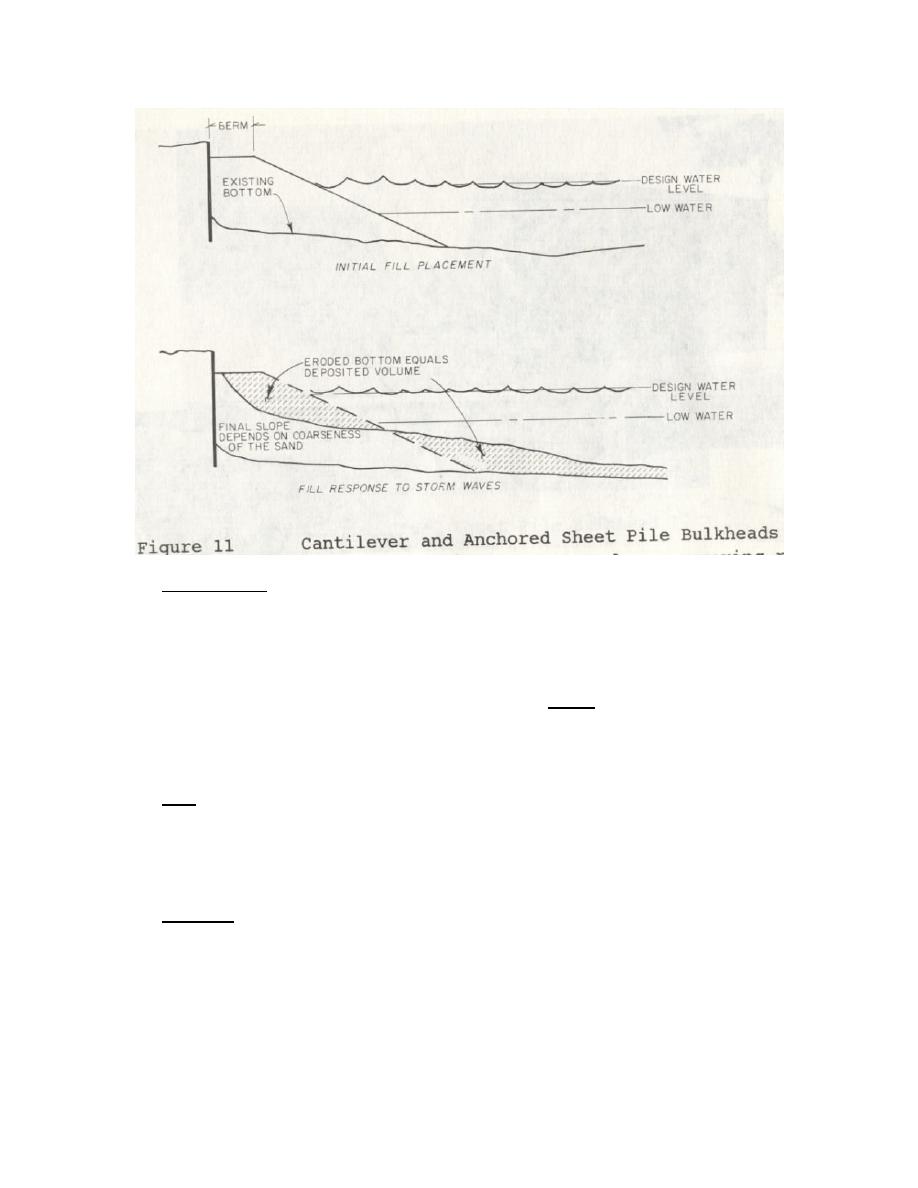
Treated Timber. Well designed and built timber structures have long been recognized as viable
and economical for bulkhead construction. Figure 12 illustrates the common types of timber sheeting
used. Only specially treated timber should be used for marine construction to prevent deterioration from
marine borers. The joints between sheets should be kept as tight as possible and filter fabric should be
used as an added precaution against loss of the soil through cracks. Only granular material should be
used for backfill. Supplemental drain holes should be placed at regular intervals to further facilitate
movement of water from behind the structure and these must always be backed with filter cloth or
crushed stone filters. All hardware and fasteners should be corrosion-resistant or protected metal. In
addition, washers should be provided under all bolts and nuts to insure that these bear evenly on the
timber members.
Steel. Steel sheet piling is probably the most widely used bulkhead-material (Figure 13). The
interlocking feature of sheet pile sections provides a sand-tight fit, generally precluding the need for
filters. The close fit may also be essentially watertight, so regularly spaced weep holes are recommended.
These, and lifting holes in the piling, should be backed with graded stone filters or filter fabric to prevent
loss of backfill.
Aluminum. Aluminum sheet piling, which comes in sections similar to those in Figure 13, is
designed and installed using conventional methods and equipment. Its primary advantages over steel are
lighter weight and superior corrosion resistance. Individual sheets can be carried and maneuvered by one
man, and most drilling and cutting can be performed with simple hand tools. Its main disadvantage,
compared to steel, is less ruggedness when driven, so it usually cannot penetrate logs, rocks, or other
hard obstructions.
23



 Previous Page
Previous Page
